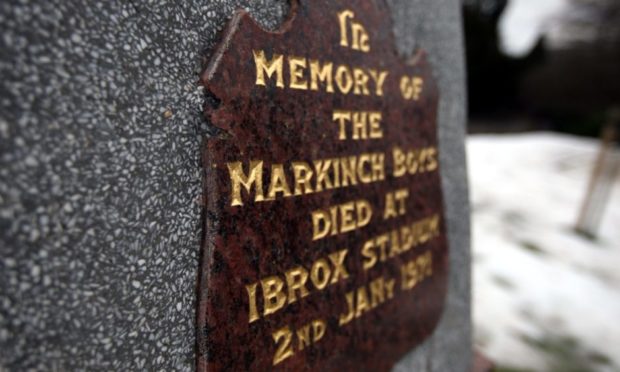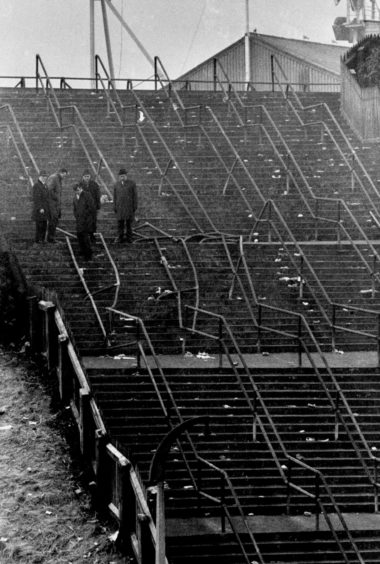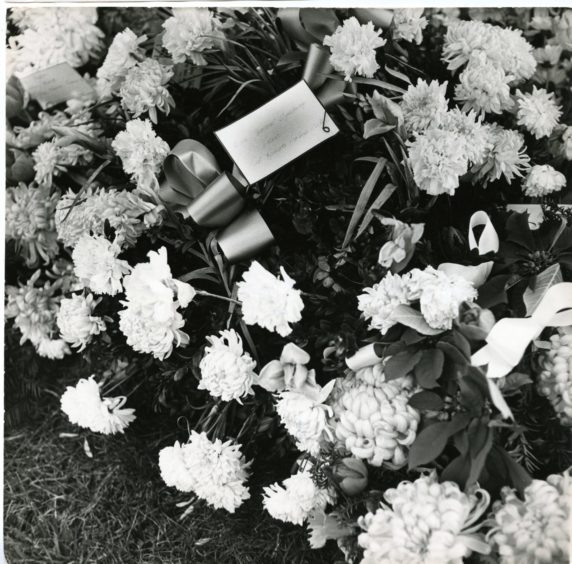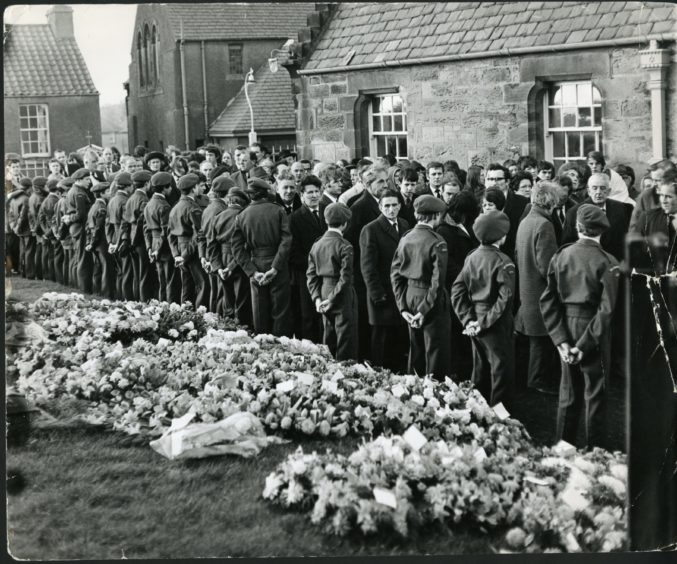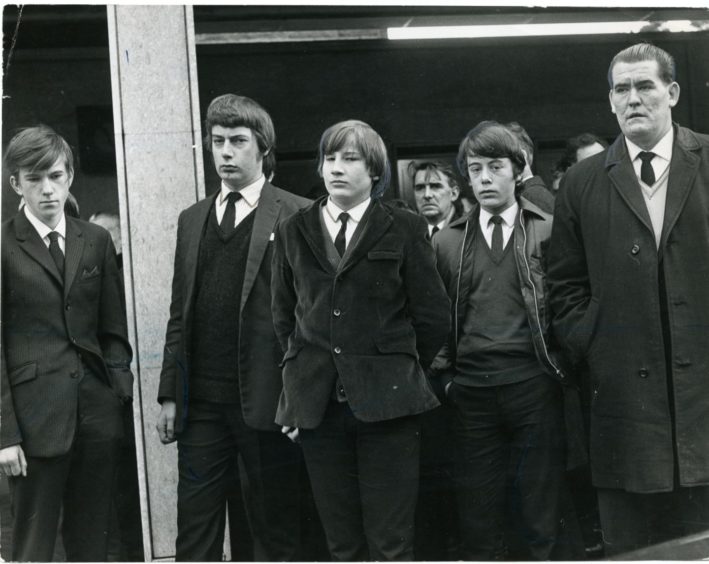They were the five Fife teenagers who travelled to Glasgow in 1971- and lost their lives in the Ibrox Disaster.
Although nearly half a century has passed since Peter Easton, 13, Bryan Todd, 14, Ronald Paton, 14, Mason Philip, 14, and Douglas Morrison, 15, were among the 66 victims of the devastating tragedy at the end of the Old Firm match on January 2.
The lads, who all played for Markinch United, have never been forgotten in the village.
A significant new housing development is being created in the community by Persimmon Homes.
And the company has submitted a recommendation to Fife Council that the streets in the scheme should be named after the boys who died at Ibrox.
Backing
The move has gained the backing of Shane Fenton, who went to the same school and was in the same football team as his friends.
The six of them walked together to the CISWO Club in Glenrothes where the buses were waiting to convey them all to Glasgow for what they hoped would be a happy day out at the end of the festive season.
Despite Shane’s support for Celtic, while the others were Rangers fans, they loved being in each other’s company and Mr Fenton never imagined that when they waved goodbye to one another at the bus depot, it would be the last time he would ever see them.
But that was before the sickening events at the denouement of an otherwise forgettable match, which finished 1-1 after Jimmy Johnstone’s late goal for Celtic was cancelled out by Colin Stein’s last-minute equaliser as the prelude to supporters heading for the exits.
The vast majority of the spectators left the stadium totally oblivious to the unfolding carnage on Stairway 13, where hundreds of supporters were caught up in the crush and, in many cases, literally had the life squeezed out of them by compressive asphyxia.
Cataclysm
Medical staff, police officers and other emergency service workers did their utmost to respond to the situation, but the list of fatalities gradually increased to its final tally of 66, with more than 200 other people injured in the cataclysm which, until Hillsborough in 1989, was the worst-ever disaster at a British football ground.
Yet, in the days before mobile phones and rolling news stations, in a time when Twitter, Facebook and text messages belonged to the world of science fiction, most of the crowd – and their families – had no idea anything was amiss as they journeyed home.
A young Alex Ferguson – who later became the successful Aberdeen and Manchester United manger – was among the famous faces, including Walter Smith and Kenny Dalglish, who attended the derby fixture with his brother Martin.
He later recalled: “It was only when I got home to my mum and dad’s that we realised what had happened. Martin had been at that end of the ground and still wasn’t home.
”It was only after a few hours when he turned up that we knew he was okay.”
Something dreadful
Mr Fenton was similarly in the dark until his bus made a stop in Kincardine on the way home and he discovered something dreadful had happened at Ibrox.
He said: “The older fans who had been at the pub had heard some news about it on television, but we never thought for a moment any Markinch boys had been involved.
“However, by the time we got back to the village, many of the locals had started to panic.
“My relatives, like those of the other boys who knew we were at the match, began to make inquiries to make sure we were okay.
“When the news eventually filtered through that Ron, Dougie, Bryan, Peter and Mason hadn’t come back on the Rangers bus, all kinds of thoughts went through our heads.
“We hoped that they had just missed the bus and would arrive home later. But there was no other way in those days of finding out what had happened.
“We stayed out until late in the evening, praying that they would appear on the last buses or trains into Markinch, but there was nothing – and it was during the next couple of days when the terrible news that we feared became a reality.”
Lined the streets
Understandably, the village was in shock, but the overwhelming scale of the tragedy pulled the community together.
Almost the whole population of 2,344 lined the streets when the funerals took place in January 7.
A service was held for Mason Philip and Ronald Paton at Kirkcaldy Crematorium and another for Peter Easton, Douglas Morrison and Bryan Todd at Markinch Parish Church.
Mr Fenton stopped going to watch Celtic because he feared the large crowds. The local five-a-side league in which Markinch United entered a team never held another game. Some of the family members of the deceased moved elsewhere to escape the pain.
But there have been concerted efforts to ensure the youngsters’ memory lives on and a plinth highlights their names in the place where they grew up together.
Support
And now, if Persimmon Homes are given the go-ahead, there will be streets bearing their names in the new development being built on the fringes of the village, adjacent to Sappi Road.
Mr Fenton supports the proposal and said: “Hopefully, Fife Council will agree to it. If they do so, if will then be the families who will have the final say.”
James MacKay, director in charge of Persimmon Homes North Scotland, said: “We have made the suggestion to Fife Council as we feel it is a fitting tribute and a lasting way of remembering those affected by the events of that day in their own community.”
